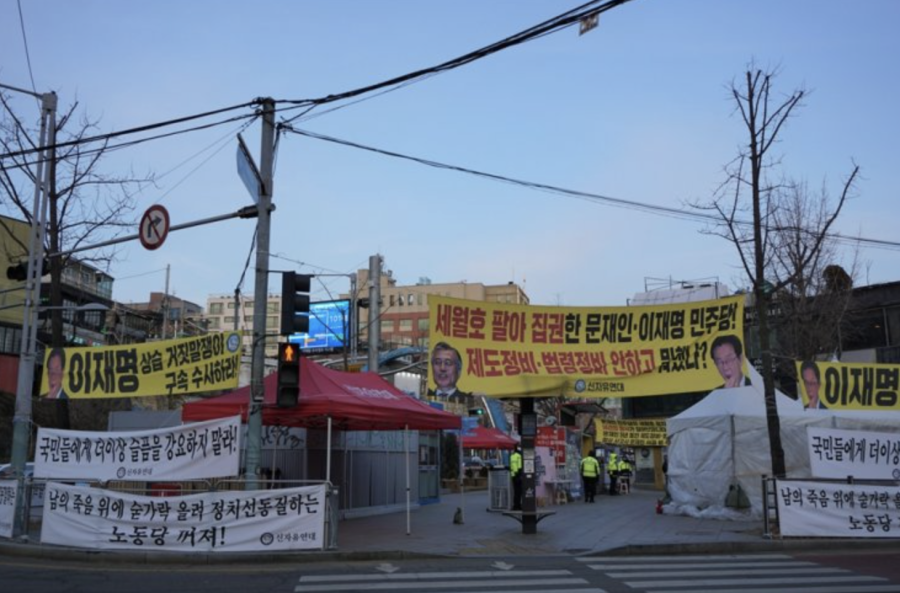100 days since the Itaewon tragedy
On Feb. 4, a day before the 100th day of the Itaewon stampede, families of the victims marched the streets of downtown Seoul. Nearly 5,000 people joined the march, which began at Noksapyeong Station—near the tragedy site—to Sejongno Street.
Citizens initially planned to create a memorial altar near Gwanghwamun Square, but faced rejection from the city government. The Seoul metropolitan government maintained their stance that installing facilities without permission in a public space is prohibited.
The government continued to interfere and even deployed police buses and about 3,000 police officers. After more than an hour of confrontation, citizens found a temporary memorial facility at Seoul Plaza to install their memorial facility.
“I was driving past Gwanghwamun Square that day,” Ann Lee (11), witness of the conflict, said. “I could hear mostly families yelling and asking the police where they were the day of the accident. You could hear and feel the anger, frustration, and grief in their voices.”
Though the confrontation between the citizens and officers resolved without major clashes, a grieving family member lost consciousness and was sent to the hospital amidst facing resistance.
“If anything, the government should have supported the citizens and even set up several memorial events,” Joshua Lee (12), a student present at the night of the Itaewon incident, said. “To take away the opportunity for people to remember their loved ones at such a critical time like now is simply unfair.”
Families wore red scarves to symbolize their lost loved ones and a badge carved with four stars representing victims, families, survivors, and rescuers. They also prepared white flowers and hot tea for the mourners.
Several citizens shared that they decided to join the memorial rally because they felt as though the National Assembly failed to uncover the truth of the accident thoroughly enough. The leader and members of the main opposition Democratic party also participated in the march.
“I saw some Korean news sources pointing out how the government was trying to avoid discussing the tragedy as much as possible,” Jian Hong (9), active news watcher, said. “I think that members of the opposition party showing their support towards families was also a way of them projecting their disapproval towards the current government.”
As of Feb. 10, the site is surrounded by banners put up by the far-right group called the New Freedom Union. The banners are filled with words insensitive to the tragedy, one reading “Stop forcing people to grieve”, and another saying “Never seen President Moon apologizing (for these disasters.”
Citizens have complained about the banners, to which the government responded by stating that the banners cannot be taken down since the conservative group registered the use of banners last December.
Despite the ongoing protests, the banners are to remain as long as the memorial site stands.

